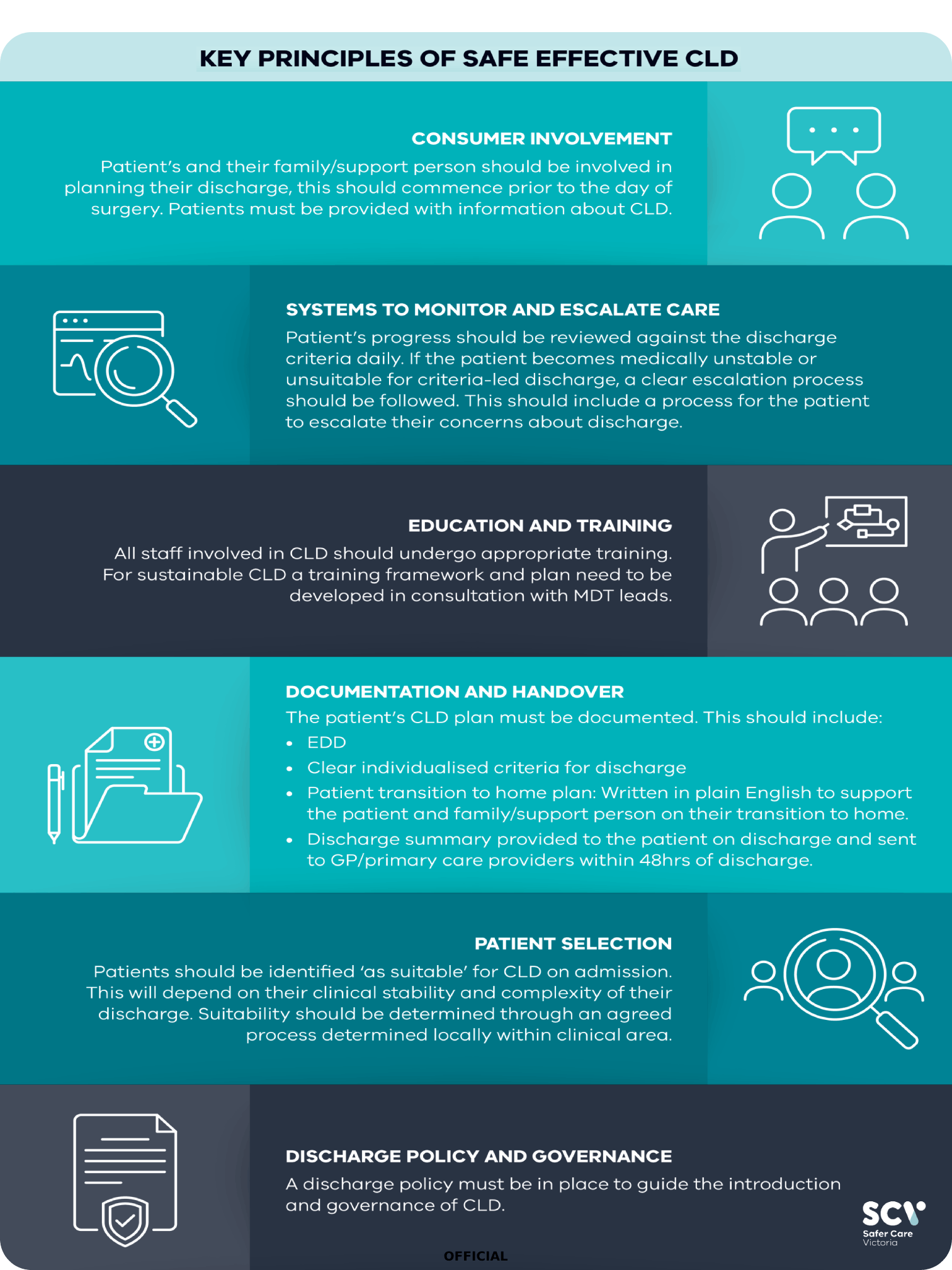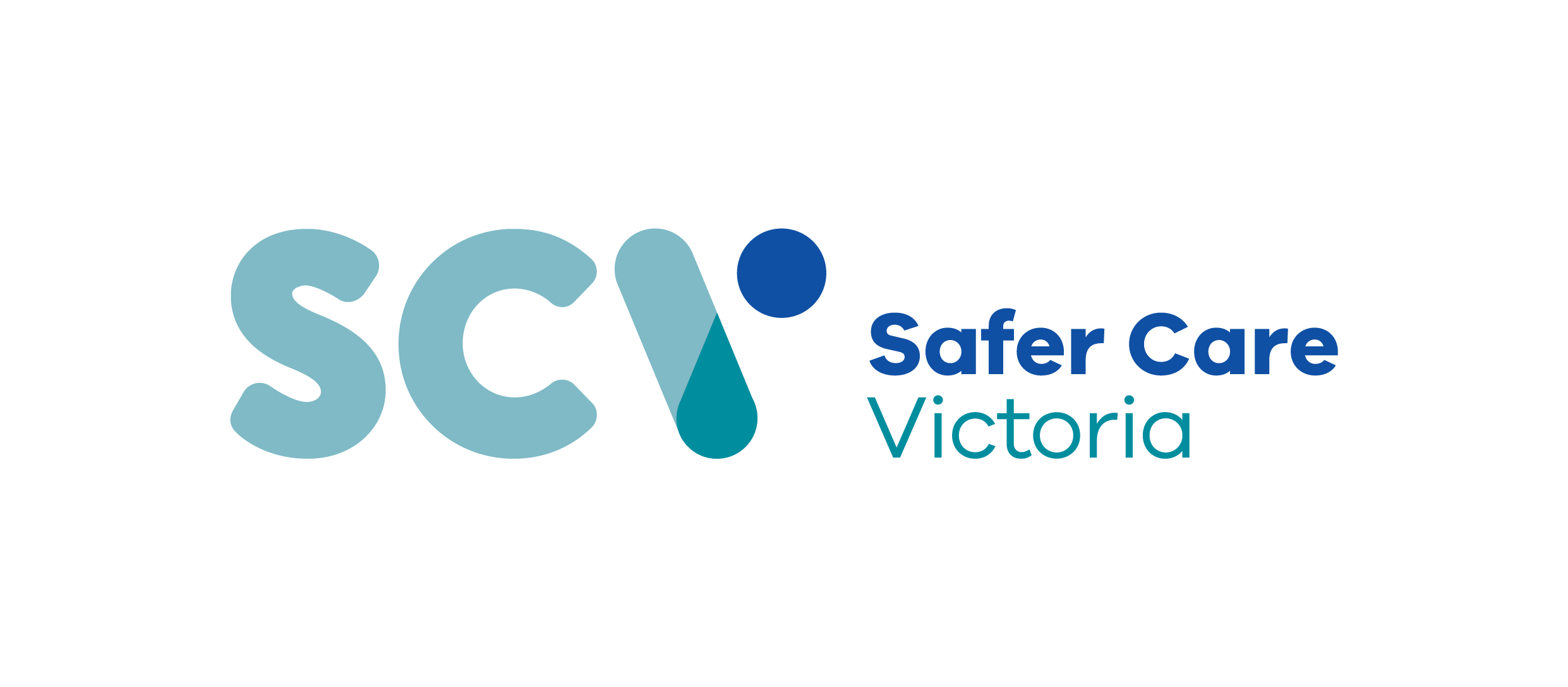About the project
The Discharge Optimisation for Planned Surgery project is focused on making the discharge process better for patients having surgery in Victoria. Our goal is to shorten the time patients spend in the hospital and make sure they leave as soon as it’s safe for them. We will do this by creating simple, clear steps for discharge based on evidence, so patients know when they can safely go home.
Objectives
- Reduced risk of hospital acquired complications
- Reduced time waiting for surgery and improved access to care
- Enhanced hospital efficiency by reducing length of stay
- Increased volume of planned surgeries
- Improved patient experience
- Improved healthcare worker wellbeing
Background
There are differences in how long patients stay in Victorian hospitals after planned surgeries. Time spent in the hospital varies between locations and can be influenced by multiple factors, including:
- how each hospital runs
- the types of patients they treat
- the complexity of the surgeries they perform.
Differences in hospital stays can lead to problems like:
- bed shortages
- higher costs
- worse outcomes for patients
- increased risk of complications acquired while in the hospital.
Current data shows that there are certain surgeries where improvements can be made, including:
- total knee and hip replacements
- mastectomies
- hysterectomies
- some general surgeries, such as hernia repairs and gallbladder removals.
How to get involved
Contact us
For more information email valuebasedhealthcare@safercare.vic.gov.au.
Solution design
The project design is based on learnings from the pilot program in 2023 and 2024. This pilot led to the creation of the Criteria Led Discharge (CLD) Toolkit. This toolkit will be utilised to support health services to make safe effective changes to their discharge processes.
The project involves two phases, but will initially focus on health services where the greatest benefit is anticipated.
Phase 1 – Intensive (6-12 months)
During this phase, hospitals will develop guidelines, policies, and safe processes. They will create detailed plans to implement any changes. Hospitals will start by testing ideas with one or two groups of patients who have longer-than-average hospital stays.
Phase 2 – Scale and spread (12-18 months)
In this phase, hospitals will adopt the new discharge process for more patient groups.
The goal is to keep improving and share best practices with others. This approach ensures that each hospital receives personalised support and guidance, making it easier to gradually implement effective discharge procedures for different patient groups

Project milestones
| Activity | Date |
|---|---|
| Intake 1 – Commenced (Targeted pilot sites) | Dec 2024 |
| Intake 2– Commenced (Targeted intake) | March 2025 |
| Intake 3 – Upcoming | Early 2026 |
Participating services
- St Vincent’s Public Hospital
- Peninsula Health
- Bendigo Health
- Southwest Healthcare (Warrnambool)
- Latrobe Regional Health
- Central Gippsland Health
- Barwon Health
- Monash Health
- Melbourne Health (Royal Melbourne Hospital)
- Mercy Health (Werribee)
- Northern Health
- Colac Area Health
Additional information
Criteria Led Discharge Toolkit
This toolkit contains resources and key principles to consider for the safe introduction of Criteria Led Discharge (CLD) in the context of planned surgery.
Planned Surgery Reform Blueprint
This Blueprint outlines how we are improving planned surgery in Victoria
Priority area
This project supports our broader effort to improve care quality, patient safety and system efficiency.



